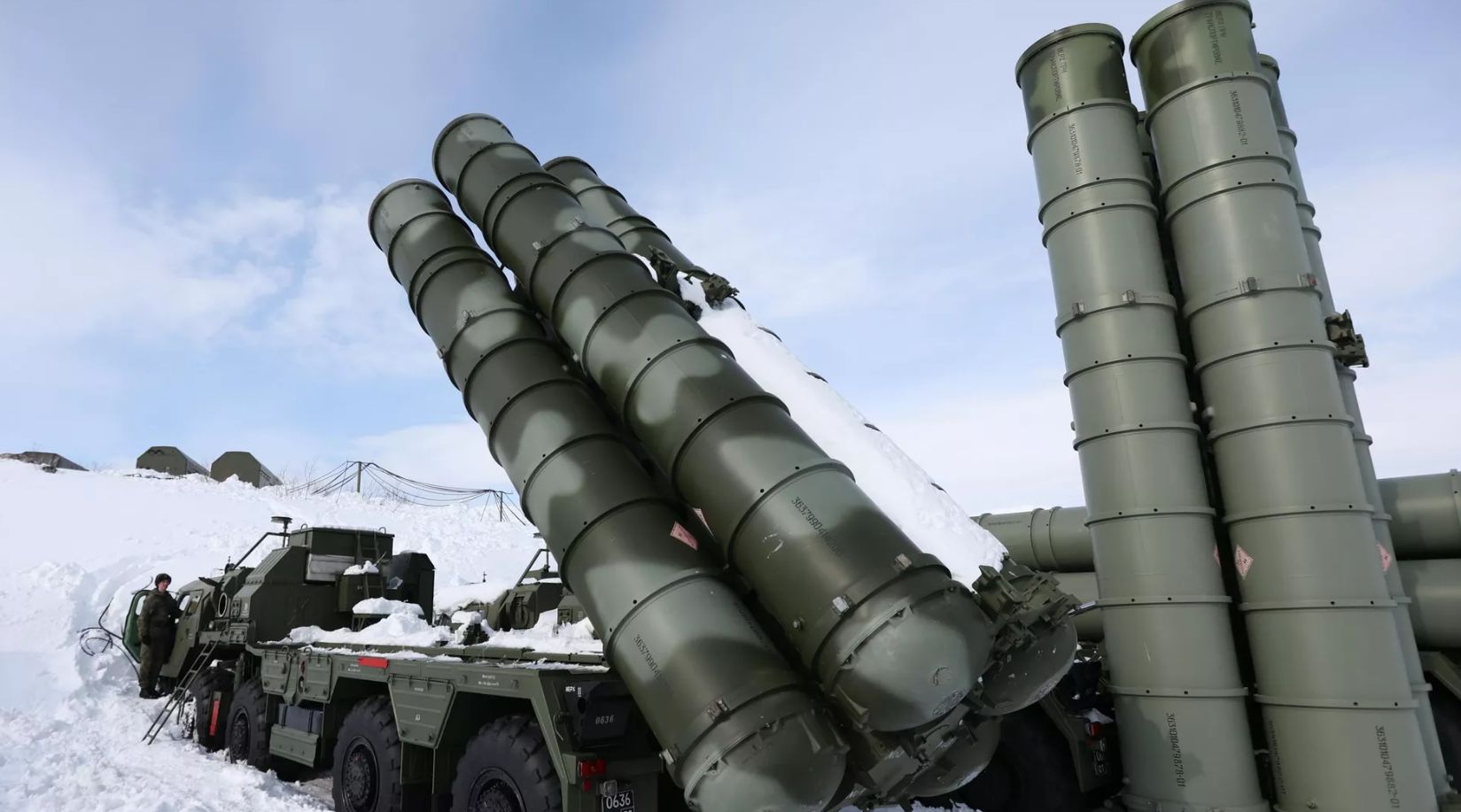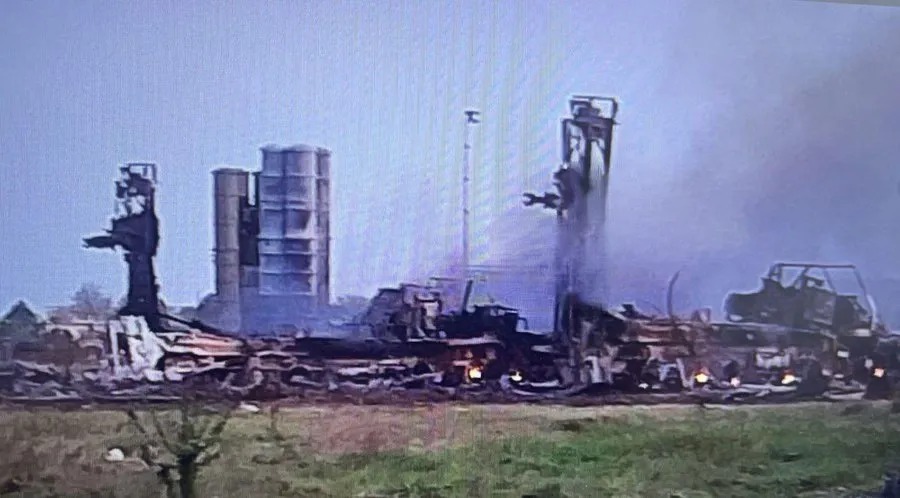Indian Air Force ‘Shoots Down’ Fighter Jets, Enemy Missiles In Simulated Drills; Comes After S-400 Thrashing In Ukraine War

Amidst the S-400 air defense system’s damaged reputation, exacerbated by the ongoing conflict in Ukraine, a recent military exercise conducted by the Indian Air Force (IAF) has revitalized its standing. The exercise showcased the system’s capabilities by successfully “shooting down” 80 percent of a simulated “enemy” fighter aircraft targets.
In 2018, India and Russia signed a deal worth over Rs 35,000 crore to supply five squadrons of S-400 air defense missiles.
To date, India has inducted three squadrons, with plans to receive the remaining two in the next few years. Although the initial completion date for the delivery was 2024, the timeline has been extended to the third quarter of 2026 due to Russia’s commitments in Ukraine.
According to reports, “Current deployments indicate that we (the IAF) have nearly 1.5 squadrons each stationed on the fronts with China and Pakistan.” Despite the delays, the available systems have proven their capabilities.
AfriPrime App link: FREE to download...
https://www.amazon.com/Africircle-AfriPrime/dp/B0D2M3F2JT
On July 26, Indian media reported that the IAF carried out an exercise in a theater where a squadron of its S-400 long-range air defense missile system, now named Sudarshan by the IAF after Lord Krishna’s Sudarshan Chakra, is stationed.
The exercise aimed to showcase the full integration of the air defense missile system into the force. During the exercise, fighter aircraft were used to test the S-400.
The Sudarshan successfully “locked on and targeted” in simulated action, “shooting down” 80 percent of the “enemy” offensive package. The remaining aircraft aborted their mission to “attack” targets within Indian territory and were intercepted by the air defense system.
The specific types of aircraft simulated as the enemy were not disclosed, but it is speculated that the IAF might have used its top-line aircraft, such as Su-30s and Rafales, to test the system’s efficiency against modern fighter jets.
The exact dates and location of the exercise were also not revealed. However, the exercise indicates that the S-400 is well integrated into the IAF’s Integrated Air Defense System, with officers effectively trained for its deployment.
This successful demonstration of the S-400’s capabilities by the IAF has revitalized the system’s credibility and reassured its strategic value amidst the challenges posed by the ongoing Ukraine conflict.

S-400.
S-400’s Performance In Ukraine War
The S-400, costing over $600 million per unit, is one of the most expensive air defense systems in Russia’s arsenal. Since its deployment in Crimea in 2016, it has been tasked with controlling the airspace over the western half of the Black Sea.
Praised as a standout in Russia’s defense exports, its reputation has taken a hit due to the ongoing war with Ukraine. The conflict has exposed significant weaknesses in the system, with Kyiv successfully destroying several S-400 launchers.
AfriPrime App link: FREE to download...
https://www.amazon.com/Africircle-AfriPrime/dp/B0D2M3F2JT
Ukrainian missile raids have potentially damaged more than five S-400 batteries. Despite Russia possessing over 50 S-400 batteries, their effectiveness in the Ukrainian conflict is questionable if they cannot withstand Ukrainian rocket attacks.
Last year, Kyrylo Budanov, head of Ukraine’s Defense Intelligence, asserted that the systematic elimination of the S-400 by Ukrainian forces has severely undermined its export potential.
However, it is essential to note that Ukraine’s successes are not solely attributable to its capabilities. Experts emphasize the critical role of Western intelligence support.

Western satellites continuously provide Ukraine with information on the location of Russian assets, while AWACS (Airborne Warning and Control System) and AEW (Airborne Early Warning) planes offer real-time data on Russian air defense systems.
This development raises questions about the extent to which the Indian Air Force replicated real-world operational scenarios during its recent exercise.
Nonetheless, Retired Indian Air Force pilot Air Marshal Anil Chopra previously highlighted the operational dynamics and limitations of any air defense system, including the renowned Israeli Iron Dome.
He pointed out that these systems, while designed to protect high-value targets, are themselves primary targets in enemy SEAD (Suppression of Enemy Air Defenses) operations. Thus, every air defense system has inherent vulnerabilities.
Despite its mobility, the S-400 requires about five minutes to launch a missile after detecting a threat, making it vulnerable during this time. Modern satellite-based and airborne ISR (Intelligence, Surveillance, and Reconnaissance) platforms, along with ELINT (Electronic Intelligence) systems, can track its location.
He explained that the S-400 is a large, spread-out system, making it difficult to conceal, and it is often used in static positions.
The essential elements of the S-400, such as radar antennas, command post vehicles, and missile launchers, are all susceptible to assaults from rockets, missiles, or large swarms of drones. This scenario has been observed in the Russia-Ukraine conflict.
While the S-400 is a formidable air defense system, its performance in Ukraine has revealed significant weaknesses. The system’s vulnerabilities, especially against well-coordinated attacks supported by advanced intelligence, highlight the challenges of maintaining its operational effectiveness in conflict zones.
AfriPrime App link: FREE to download...
- Questions and Answers
- Opinion
- Story/Motivational/Inspiring
- Technology
- Art
- Causes
- Crafts
- Dance
- Drinks
- Film/Movie
- Fitness
- Food
- الألعاب
- Gardening
- Health
- الرئيسية
- Literature
- Music
- Networking
- أخرى
- Party
- Religion
- Shopping
- Sports
- Theater
- Wellness
- News
- Culture
- War machines and policy

